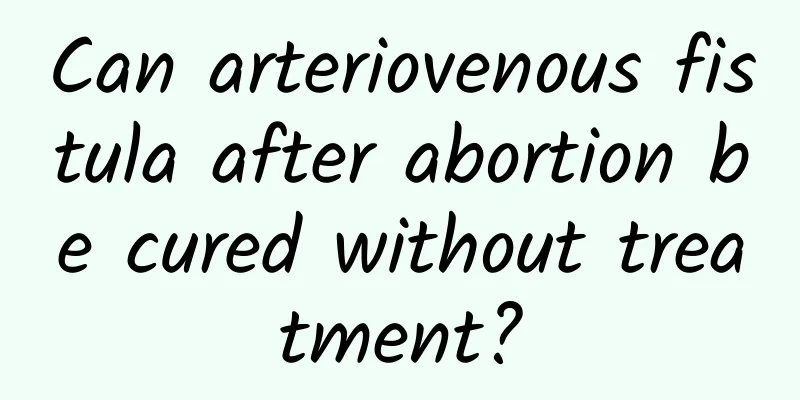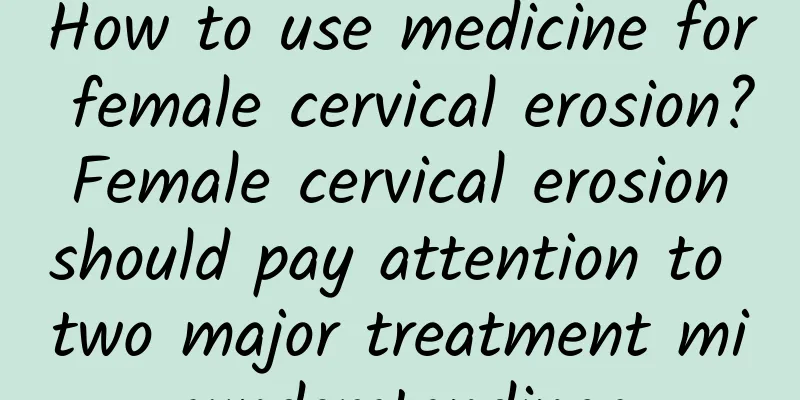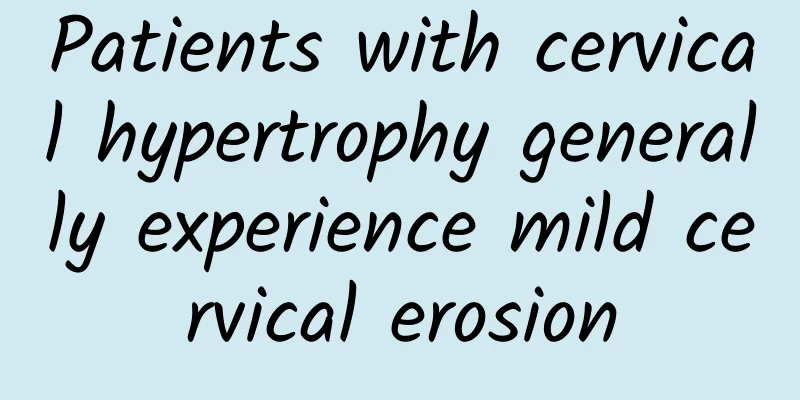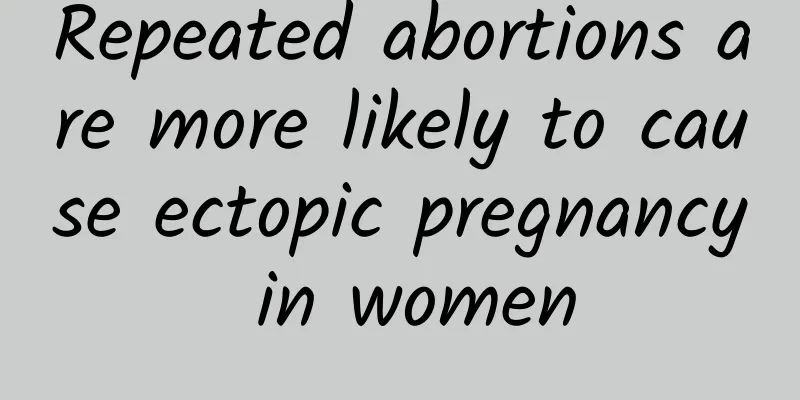How to deal with pregnancy complicated with uterine fibroids? What are the hazards of pregnancy complicated with uterine fibroids?

|
1. The impact of pregnancy on uterine fibroids (1) Changes in the position of uterine fibroids: As the uterus grows during pregnancy, the position of the fibroids will also change accordingly, and may shift up and down or left and right as the uterine wall stretches. (2) Increased size of fibroids: Due to the influence of high levels of estrogen and progesterone during pregnancy and increased blood supply to the uterus, uterine fibroid cells hypertrophy and edema cause the uterine fibroids to become larger, softer, and sometimes flatter. (3) Degeneration and necrosis of fibroids: Due to increased hormone levels, mechanical compression and poor blood circulation in fibroids, fibroids may undergo hyaline degeneration, myxoid degeneration, fatty degeneration, degeneration and even hemorrhagic necrosis, but red degeneration is common in hemorrhagic necrosis. (4) Pedicle torsion: Pedicle torsion of subserosal fibroids is uncommon, but the incidence during pregnancy is significantly higher than at other times. 2. The impact of uterine fibroids on pregnancy (1) Infertility: Whether fibroids affect pregnancy is related to their location. For example, uterine cornual fibroids can compress the interstitial part of the fallopian tube, hindering the meeting of sperm and egg, leading to infertility. (2) Miscarriage and premature birth: The incidence of spontaneous abortion in women with uterine fibroids is about 3 times higher than that in women without fibroids, reaching 20% to 30%. Submucosal uterine fibroids, in particular, can deform the uterus and infect the endometrium, making it difficult for the fertilized egg to implant. Even if the fertilized egg is implanted, it may cause miscarriage due to insufficient blood supply to the endometrium. Due to mechanical compression and uterine deformation, larger intramural fibroids are also prone to miscarriage or premature birth. (3) Abnormal fetal position, fetal deformation and FGR: Due to the mechanical obstruction of the fibroids, limited fetal movement can lead to abnormal fetal position. In addition, due to the compression of the fibroids, fetal deformation and FGR may occasionally occur. (4) Placental abnormalities: Myomas can cause poor development of the adjacent decidua, affecting the implantation of the fertilized egg, leading to placenta previa or early placental detachment. During delivery, the placenta will adhere and cannot be expelled on its own. (5) If the fibroids occur in the uterus, as the uterus grows, the fibroids can be squeezed out of the pelvic cavity and will not affect delivery; fibroids in the lower part of the uterus or cervix stay in the pelvic cavity, affecting the first exposure connection and the pelvic cavity, resulting in high floating of the first exposure and abnormal fetal position, hindering normal delivery. During delivery, fibroids cause abnormal uterine contraction function, leading to primary or secondary uterine contraction fatigue, resulting in a prolonged delivery process. (6) Postpartum hemorrhage: Due to the presence of fibroids, uterine contraction is hindered, especially when there are submucosal uterine fibroids, or when the placenta is attached to the surface of uterine fibroids, placental adhesion or even implantation is likely to occur, and the amount of postpartum bleeding will increase significantly. (7) Uterine torsion: If there is a fibroid on one side of the uterine body, uterine torsion may occur when the cervix softens during pregnancy, causing the mother to suddenly experience severe abdominal pain and severe shock. (8) Puerperal infection: Poor uterine involution, poor lochia discharge or prolapse of submucosal fibroids can easily induce puerperal infection. Treatment of uterine fibroids combined with pregnancy: If there are no symptoms during pregnancy, special treatment is generally not required, and regular prenatal examinations can be performed. If the fibroids undergo red degeneration, palliative treatment without surgery can almost relieve the symptoms, whether during pregnancy or the puerperium. If the pedicle of the subserosal fibroids is torsion and conservative treatment is ineffective, surgical intervention can be performed. If the fibroids are embedded in the pelvic cavity, affecting the continuation of pregnancy, or the fibroids compress organs and the symptoms are severe, surgical treatment should be performed. Whether the pregnancy is terminated should be determined based on the specific situation of the patient. In late pregnancy, the method of delivery should be determined based on the size, location, fetal and mother's specific conditions of the fibroids. During delivery, if the fetal position is abnormal, production capacity is abnormal, compression is blocked, or the fetus is difficult to expose, cesarean section should be performed in time, and uterine bleeding should be prevented during and after the operation. Whether to remove the fibroids or uterus at the same time during cesarean section should also be determined based on the size, location and patient's condition of the fibroids. If the submucosal fibroids enter the vagina during vaginal delivery, bleeding and infection can be prevented. |
Recommend
Which hospital is good for treating cervical erosion? Pay attention to these when choosing a hospital for treating cervical erosion
1. Choose a hospital with very good doctors: Afte...
Slim thighs without asking for help, do this for 8 minutes every day
With the arrival of spring, women who love beauty...
What are the ways to prevent ovarian cysts?
Ovarian cyst is a relatively common gynecological...
How long can I have sex after removing the fallopian tube for ectopic pregnancy
Ectopic pregnancy is also called ectopic pregnanc...
Do you know what premature ovarian failure is?
Experts believe that research shows that the inci...
What medicine should I take for endometrial tuberculosis
The most common treatment for endometrial tubercu...
What conditions can cause dysmenorrhea?
Do you know what causes dysmenorrhea? The causes ...
What should I do after uterine fibroid surgery? What should I pay attention to after uterine fibroid surgery?
What are the precautions after uterine fibroid su...
What should I do if I have multiple uterine fibroids? Are there obvious symptoms of multiple uterine fibroids?
Uterine fibroids are one of the common genital di...
Women can eat more garlic to prevent fungal vaginitis
Many female friends suffer from gynecological dis...
What medicine should I take for a 6.2 cm uterine fibroid? What should I do if my uterine fibroid is 0.7 cm?
What medicine should I take for a 6.2 cm uterine ...
Can I get pregnant if I have cervical erosion 3rd degree?
In recent years, the incidence of many gynecologi...
Eat zongzi to reduce fat and relieve greasiness! 5 tea drinks to eat after dinner
The Dragon Boat Festival is approaching and the f...
Can an ectopic pregnancy be detected with a pregnancy test stick?
Ectopic pregnancy refers to ectopic pregnancy in ...
To prevent osteoporosis, calcium is not enough! Nutritionist Hu Ci'en: 3 nutrients to protect bones
Osteoporosis is the enemy of women! According to ...









